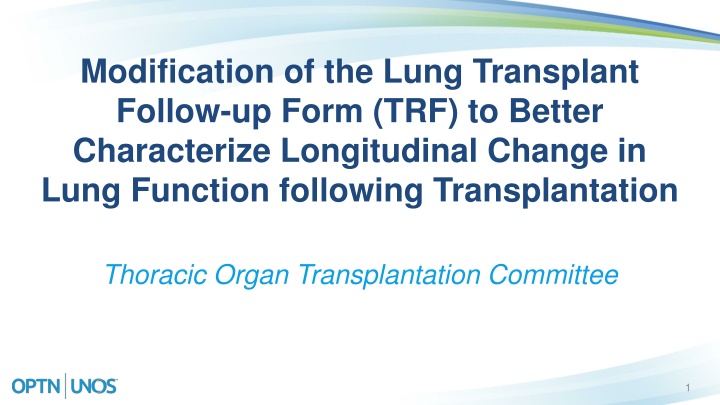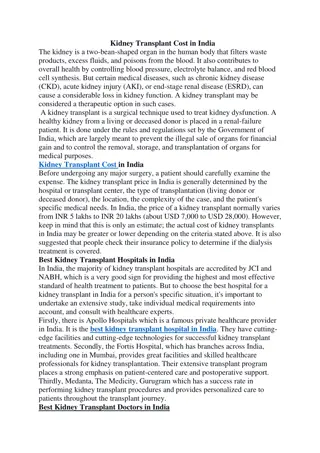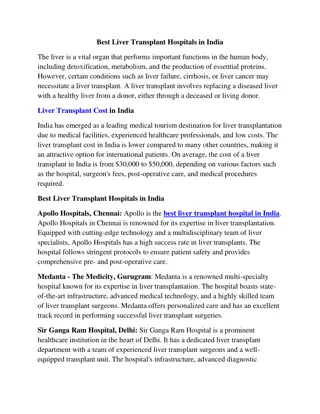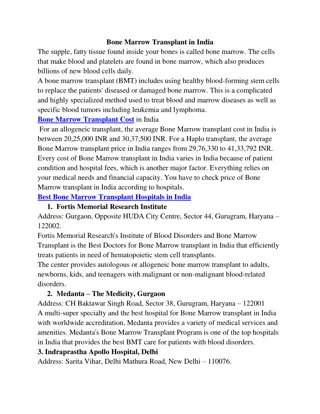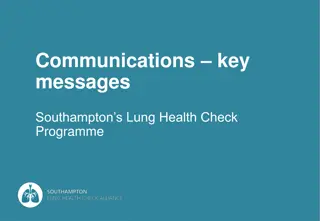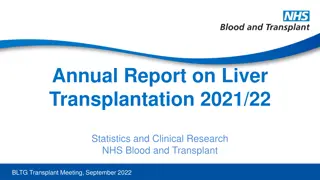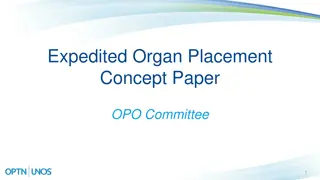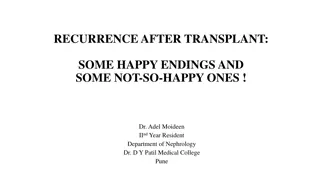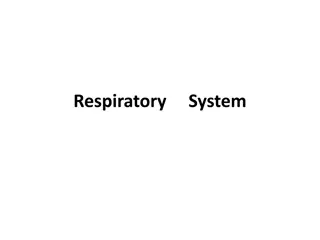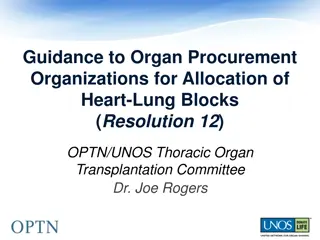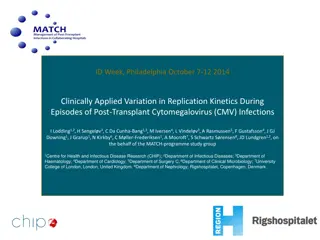Enhancing Lung Transplant Follow-up for Improved Graft Function Analysis
Proposed modifications to the Lung Transplant Follow-up Form aim to address the limitations in capturing longitudinal changes in lung function post-transplantation. By adding new fields for Forced Vital Capacity (FVC) and Forced Expiratory Flow (FEF 25-75) alongside existing FEV1 data, the updated form will provide a more comprehensive view of recipients' prognosis. Additionally, adjustments to tracking bronchial strictures and oxygen requirements at specific intervals will offer valuable insights into recipient outcomes over time.
Download Presentation

Please find below an Image/Link to download the presentation.
The content on the website is provided AS IS for your information and personal use only. It may not be sold, licensed, or shared on other websites without obtaining consent from the author.If you encounter any issues during the download, it is possible that the publisher has removed the file from their server.
You are allowed to download the files provided on this website for personal or commercial use, subject to the condition that they are used lawfully. All files are the property of their respective owners.
The content on the website is provided AS IS for your information and personal use only. It may not be sold, licensed, or shared on other websites without obtaining consent from the author.
E N D
Presentation Transcript
Modification of the Lung Transplant Follow-up Form (TRF) to Better Characterize Longitudinal Change in Lung Function following Transplantation Thoracic Organ Transplantation Committee 1
What problem will the proposal solve? Current Transplant Recipient Follow-up (TRF) form only collects data on bronchiolitis obliterans syndrome (BOS) Limited data does not capture all the prognosis possibilities for declining graft function 2
What are the proposed solutions? Modify current FEV1 field and add Forced Vital Capacity (FVC) and Forced Expiratory Flow 25 75% (FEF 25 75) fields Collected at three time intervals per TRF Modify Bronchial Stricture and Oxygen Requirement fields Bronchial Stricture: 6 month and 1-5 year TRFs O2 Requirement: at rest and with exercise 3
What are the proposed solutions? Element Current form form 6 month 1-5 TRF 6+ TRF Interim Forms (Death/Graft Failure) Yes Yes Yes- modified Yes- New Yes- New Yes- modified Yes- modified Yes- New FEV 1 No Yes FVC No Yes- New Yes- New Yes- New Yes FEF 25-75 Yes Yes- modified Yes- modified Yes- modified No Bronchial stricture Oxygen requirement Yes Yes- modified Yes- modified 5
How will members implement this proposal? Transplant Hospitals: provide new graft function data New data elements are standard measures (part of pulmonary function test) readily available Possible minimal staff training 6
How will the OPTN implement this proposal? June 2018 Board of Directors meeting Programming of TIEDI forms Instructional effort may be needed No changes to monitoring plan Any data entered in UNetSM is subject to OPTN review 7
Feedback The Committee is proposing keeping the bronchial stricture question on the 6-month and 1-5 year TRFs. Does the community feel this question is of value? If so, please provide input on how the question could be better asked to elicit more meaningful data regarding this short-term complication. If not, please articulate why. The Committee welcomes feedback on how many time intervals should be collected for FEV1, FVC, and FEF 25-75. Members are asked to comment on both the immediate and long term budgetary impact of resources that may be required if this proposal is approved. This information assists the Board in considering the proposal and its impact on the community. 8
Questions? Kevin Chan, MD Committee Chair kevichan@med.umich.edu Kimberly Uccellini, MS, MPH Committee Liaison Kimberly.Uccellini@unos.org 9
Extra Slides 10
Supporting Evidence Data showed inconsistent reporting for BOS on current TRF. 11
Supporting Evidence Bronchial Stricture Data Completeness 12
Supporting Evidence O2 at Rest Data Completeness 13
